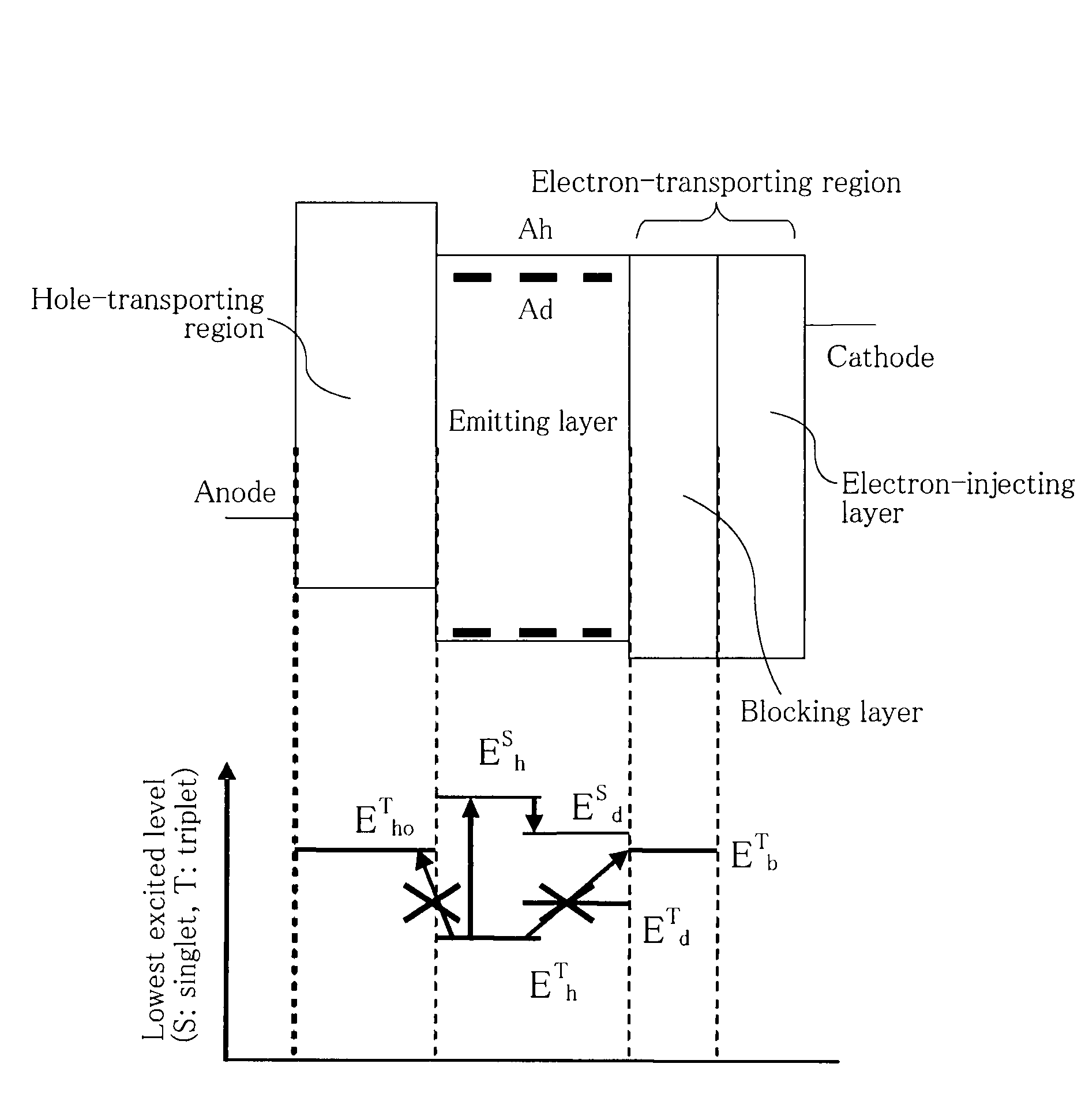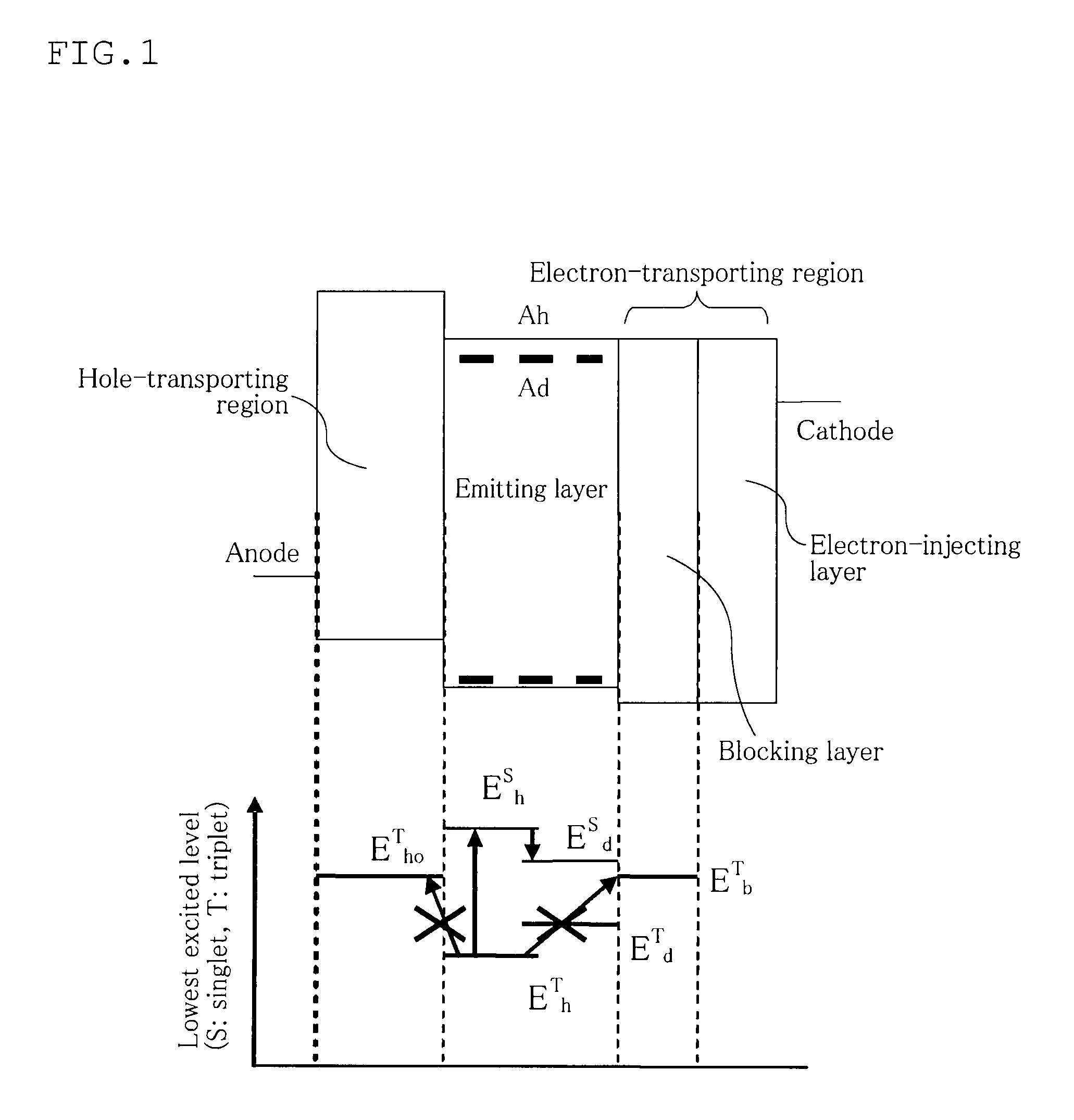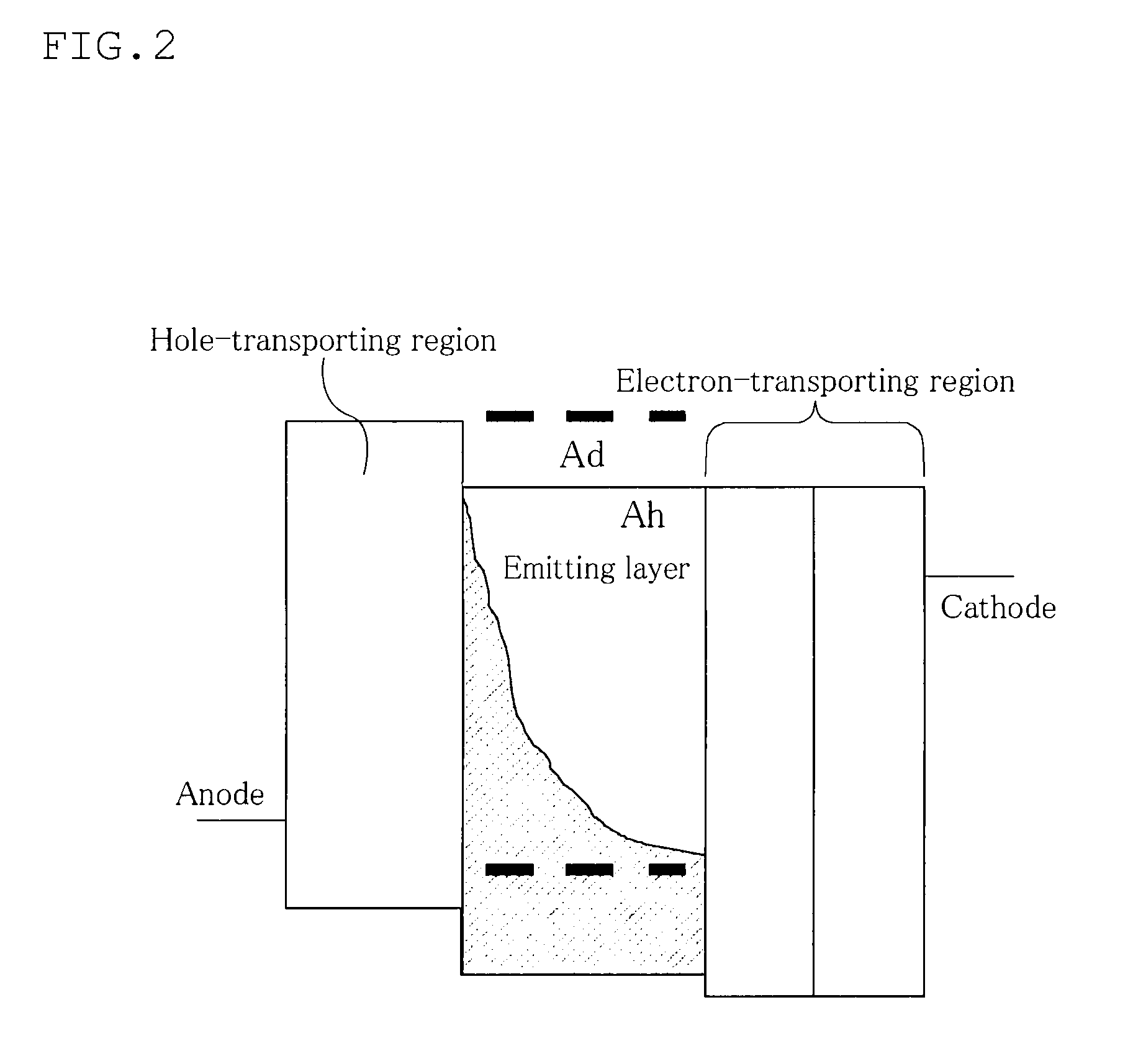Organic electroluminescent device
a technology of electroluminescent devices and organic materials, applied in the direction of organic semiconductor devices, discharge tube luminescnet screens, pyrene dyes, etc., can solve problems such as efficiency improvement, and achieve the effect of improving efficiency and lifetime of fluorescent devices, and improving efficiency of fluorescent devices
- Summary
- Abstract
- Description
- Claims
- Application Information
AI Technical Summary
Benefits of technology
Problems solved by technology
Method used
Image
Examples
first embodiment
[0056]The invention utilizes the TTF phenomenon. First, an explanation is made of the TTF phenomenon.
[0057]Holes and electrons injected from an anode and a cathode are recombined with an emitting layer to generate excitons. As for the spin state, as is conventionally known, singlet excitons account for 25% and triplet excitons account for 75%. In a conventionally known fluorescent device, light is emitted when singlet excitons of 25% are relaxed to the ground state. The remaining triplet excitons of 75% are returned to the ground state without emitting light through a thermal deactivation process. Accordingly, the theoretical limit value of the internal quantum efficiency of a conventional fluorescent device is believed to be 25%.
[0058]The behavior of triplet excitons generated within an organic substance has been theoretically examined. According to S. M. Bachilo et al. (J. Phys. Chem. A, 104, 7711 (2000)), assuming that high-order excitons such as quintet excitons are quickly retu...
second embodiment
[0131]When the triplet energies of the host, the dopant and the material for the blocking layer satisfy the specified relationship, the ratio of the luminous intensity derived from TTF can be 30% or more of the total emission. As a result, a high efficiency which cannot be realized by conventional fluorescent devices can be attained.
[0132]The ratio of luminous intensity derived from TTF can be measured by the transient EL method. The transient EL method is a technique for measuring a decay behavior (transient properties) of EL emission after removal of a DC voltage applied to a device. EL luminous intensity is classified into luminous components from singlet excitons which are generated by the first recombination and luminous components from singlet excitons generated through the TTF phenomenon. The lifetime of a singlet exciton is very short, i.e. on the nanosecond order. Therefore, this emission decays quickly after removal of a DC voltage. On the other hand, the TTF phenomenon is...
third embodiment
[0138]The device of the invention may have a tandem device configuration in which at least two emitting layers are provided. An intermediate layer is provided between the two emitting layers. Of the two emitting layers, at least one is a fluorescent emitting layer, which satisfies the above-mentioned requirements. Specific examples of device configuration are given below.
[0139]Anode / fluorescent emitting layer / intermediate layer / fluorescent emitting layer / electron-transporting region / cathode
[0140]Anode / fluorescent emitting layer / electron-transporting region / intermediate layer / fluorescent emitting layer / cathode
[0141]Anode / fluorescent emitting layer / electron-transporting region / intermediate layer / fluorescent emitting layer / electron-transporting region / cathode
[0142]Anode / phosphorescent emitting layer / intermediate layer / fluorescent emitting layer / electron-transporting region / cathode
[0143]Anode / fluorescent emitting layer / electron-transporting region / intermediate layer / phosphorescent emitt...
PUM
 Login to View More
Login to View More Abstract
Description
Claims
Application Information
 Login to View More
Login to View More - R&D
- Intellectual Property
- Life Sciences
- Materials
- Tech Scout
- Unparalleled Data Quality
- Higher Quality Content
- 60% Fewer Hallucinations
Browse by: Latest US Patents, China's latest patents, Technical Efficacy Thesaurus, Application Domain, Technology Topic, Popular Technical Reports.
© 2025 PatSnap. All rights reserved.Legal|Privacy policy|Modern Slavery Act Transparency Statement|Sitemap|About US| Contact US: help@patsnap.com



